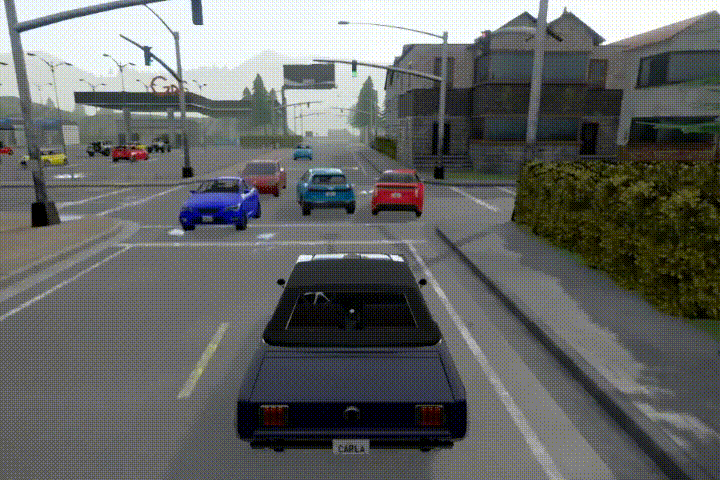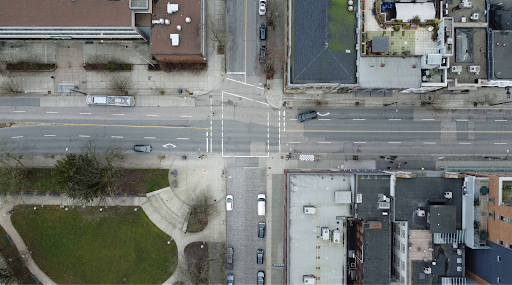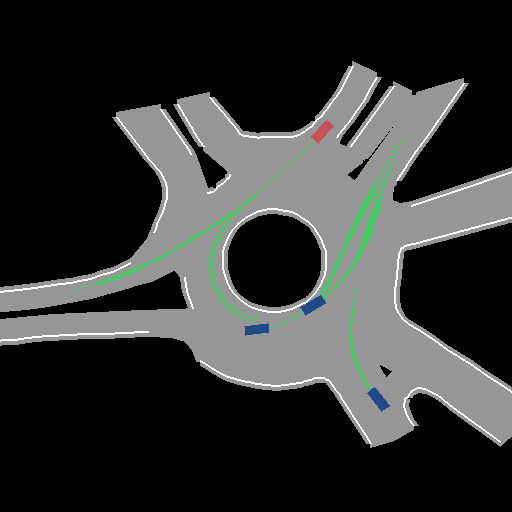Making Simulations More Human with Inverted AI
"We got to the point where we had so many models and data versions that we simply couldn’t manually keep track of all of them. Once we started taking advantage of Artifacts, it’s been very helpful."

Adam Ścibior
CTO and Co-founder

Canadian Tech Talent
The pandemic has reshaped modern life in many ways–including the future of work. With remote and hybrid work here to stay, thriving careers in the tech industry no longer depend on living in traditional talent hubs like San Francisco, New York, or Seattle. It’s time to look north of the border where Canada is steadily rising to become a tech titan thanks to world-class universities and research programs.
Inverted AI, a spin-off company supported by the University of British Columbia, is making waves in the autonomous vehicle (AV) industry with its advanced simulation technology. Because of the inherent risks of imperfect AVs, much of the training in this space can’t be done in the real-world and is instead achieved by leveraging simulated environments. The issue with a lot of these environments is that they’re too sterile. Cars and pedestrians in them behave in unnatural ways that don’t prepare self-driving cars for chaotic urban environments, with all their particularities and nuance. And training in an unnatural simulation doesn’t prepare models to handle the actual, natural world.
Inverted AI aims to solve just this. Their mission is to build AI agents—specifically Non-Playable Characters (NPCs)—to be reactive, realistic, and behaviorally diverse. Simply put, they’re building agents that act just like humans.
“Human-like NPCs are critical for achieving fully autonomous vehicles and we’re just not seeing that in the market right now,” says Frank Wood, CEO at Inverted AI.
TRA
To build NPCs that are very similar to humans in terms of reactivity, realism, and diversity of behavior, Inverted AI uses predictive human behavior models learned from massive quantities of video data sourced from drone pilots flying all over the world. This real-world data is ideal for training realistic NPCs: after all, they’re learning driving behavior from actual drivers.

What’s Inverted AI’s secret sauce? A predictive model called ITRA, short for Imagining the Road Ahead. As Wood explains, Inverted AI thinks of ITRA as the GPT of behavior.

In the image above, ITRA conditions on a map and some amount of historical position data of the agents to jointly predict the future of all the agents. The green lines indicate the different and pragmatic routes the various agents could take. At a closer look, the two blue cars staying on the roundabout highlight a subtle but realistic reactivity—where a faster vehicle is overtaking a slow one.
The last bit of Inverted AI’s secret sauce is that their proprietary techniques to transfer these models into simulated environments are simulator-agnostic. Utilizing two API endpoints—INITIALIZE and DRIVE—any company can simply provide a map and the number of agents and INITIALIZE and DRIVE will seamlessly integrate into their simulation stack.
Today, Inverted AI is a small team of fifteen consisting of student researchers and full-time staff. Developing such world-class predictive models with limited resources is no easy feat. That’s where Weights & Biases come in.
Scaling a Company with Weights & Biases
As a growing team, Inverted AI requires tools that allow them to scale successfully as a company. They needed something that could help their day-to-day work and enable them to move fast without sacrificing quality. Built for scale, W&B gave the team the ability to amplify their efforts and deliver results.
In the beginning, W&B’s automated experiment tracking capabilities were the team’s primary use. When generating or testing their environments, Inverted AI has to be cognizant of certain key performance indicators (KPIs) to ensure their models simulate realistic, reactive, and diverse behaviors. With W&B, the team could track all their experiments with metrics and logs to compare models live and evaluate performance. Since Inverted AI models are deployed to production as soon as they demonstrate improved performance, having the ability to quickly and accurately assess their models is vital to the team.
As the company’s headcount grew, Inverted AI also began using more and more W&B features to boost team efficiency and productivity.
Take, for example, hyperparameter selection. Finding the most optimal hyperparameter values is crucial to achieving good performance with any ML model, and ITRA has plenty of those to tune. On top of that, the interactive nature of behavior prediction introduces additional configuration options for the training environment, such as the episode length or termination conditions. Trying different values of all those hyperparameters is challenging—even from the orchestration perspective alone, especially for student researchers, who often run their experiments on a patchwork of heterogeneous clusters. With W&B Sweeps, the team was able to organize and orchestrate the jobs easily, staying on top of thousands of different configurations, and W&B Reports allowed for quick and convenient dissemination of results internally, accelerating the flow of information within the company.
Past that, they also leveraged W&B Artifacts to store and keep track of datasets, models, and evaluation results across their ML pipelines. “We got to the point where we had so many models and data versions that we simply couldn’t manually keep track of all of them. Once we started taking advantage of Artifacts, it’s been very helpful,” said Adam Ścibior, CTO at Inverted AI.
As the team continues to build improved variants of ITRA, speed, accuracy, and efficiency are all essential ingredients to accomplish that mission. Having a tool like W&B gave them exactly that.
A Startup to Watch
As a small organization with hopes to compete with competitors like Waymo and NVIDIA, Inverted AI needed a solution to empower its team to iterate quickly and confidently. As the team ramped up their usage of W&B, they were able to accelerate research and build valuable models in less time and most importantly, at scale.
While the AV industry might be filled with companies from the United States now, Inverted AI shows that Canada is a force to be reckoned with. Building world-class predictive models that can be used to drive human-like NPCs is an ambitious mission. Streamlining the machine learning workflow with Weights & Biases meant training more and better models faster and deploying them quickly and confidently. The work the team is doing ensures better driving, fewer accidents, and most importantly, safer roads for everyone.